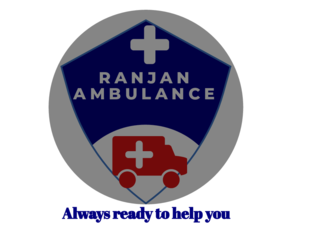
Ambulance Services in Bhagalpur: Facilitating Critical Healthcare Access
Bhagalpur, a district located in the eastern part of Bihar, India, is renowned for its historical significance, cultural heritage, and vibrant silk industry. However, like many regions in rural India, access to timely healthcare services, especially emergency medical assistance, remains a significant challenge. This article explores the importance, infrastructure, challenges, and impact of ambulance services in Bhagalpur district.
Healthcare Landscape in Bhagalpur
Bhagalpur district, bordered by the river Ganges to the south, Munger district to the east, Banka district to the north, and Godda district of Jharkhand to the west, is characterized by its predominantly rural setting with scattered population centers. The district’s healthcare infrastructure includes primary health centers (PHCs), community health centers (CHCs), and a district hospital, which collectively serve the healthcare needs of its residents. Despite these facilities, accessing healthcare services, especially during emergencies, remains a critical issue due to geographical challenges and infrastructural limitations.
Importance of Ambulance Services
Ambulance services in Bhagalpur district play a crucial role in healthcare delivery for several reasons:
Geographical Challenges: The district’s rural terrain and dispersed population make it challenging for residents to access medical facilities swiftly. Ambulance services bridge this gap by providing timely transportation during medical emergencies, thereby ensuring that patients receive critical care without delay.
Emergency Medical Response: Quick access to medical transport is essential for emergencies such as accidents, childbirth complications, heart attacks, and other critical conditions. Ambulance services facilitate rapid response and transportation to healthcare facilities, significantly enhancing the chances of survival and recovery for patients.
Healthcare Equity: Ambulance services promote equity in healthcare access by ensuring that even residents in remote villages have access to emergency medical transport, regardless of their socioeconomic status. This contributes to reducing disparities in healthcare outcomes across the district.
Types of Ambulance Services Available
In Bhagalpur district, ambulance services typically fall into two categories:
Basic Life Support (BLS) Ambulances: Equipped with essential medical equipment such as first aid supplies, oxygen, and basic medications, BLS ambulances provide initial medical care during transportation. They are staffed with trained paramedics capable of stabilizing patients before reaching healthcare facilities.
Advanced Life Support (ALS) Ambulances: ALS ambulances are equipped with advanced medical equipment, including cardiac monitors, ventilators, and intensive care medications. They are staffed with paramedics or emergency medical technicians (EMTs) trained to manage critical conditions and provide specialized care en route to hospitals.
Infrastructure and Operation
The infrastructure supporting ambulance services in Bhagalpur includes:
Ambulance Fleet: Managed by government health departments and sometimes supplemented by private healthcare providers, the ambulance fleet comprises vehicles tailored to navigate rural roads and address the district’s geographic and demographic needs.
Emergency Response Centers: These centers serve as communication hubs, receiving emergency calls and dispatching ambulances based on the severity and nature of the medical emergency. Coordination with local hospitals, PHCs, and CHCs ensures seamless transfer of patients for further medical treatment upon arrival.
Training and Staffing: Ambulance services are supported by trained paramedics, EMTs, and drivers who undergo regular training to enhance their skills in emergency medical care and safe transportation practices.
Challenges and Solutions
Despite their critical role, ambulance services in Bhagalpur district encounter several challenges:
Infrastructure Limitations: Poor road conditions, particularly during monsoon season, can hinder the timely arrival of ambulances in remote areas. Improving and maintaining road infrastructure is essential to facilitate faster ambulance access.
Awareness and Accessibility: Public awareness about when and how to access ambulance services during emergencies remains limited in some communities. Outreach and educational programs are crucial to educate residents about the importance of timely medical intervention and how to access emergency services promptly.
Funding and Sustainability: Ensuring sustainable funding for ambulance services and maintaining the fleet in good operational condition pose ongoing challenges. Public-private partnerships and innovative funding models are essential for addressing these issues and enhancing service quality.
To address these challenges, initiatives include:
Road Infrastructure Development: Collaborative efforts between local authorities and healthcare providers to improve and maintain road networks, especially in rural and remote areas.
Community Engagement Programs: Conducting awareness campaigns and health education sessions to educate residents about emergency medical services and encourage proactive use of ambulance services during emergencies.
Technology Integration: Incorporating GPS tracking systems and telemedicine capabilities to improve ambulance dispatch, response times, and coordination with healthcare facilities.
Impact on Healthcare Outcomes
Efficient ambulance services in Bhagalpur district contribute significantly to improved healthcare outcomes:
Reduced Mortality Rates: Timely access to medical care through ambulance services helps reduce mortality rates associated with critical conditions and accidents.
Improved Maternal and Child Health: Prompt transportation during childbirth emergencies contributes to reducing maternal and neonatal mortality, thereby enhancing overall health outcomes.
Enhanced Emergency Preparedness: Strengthening emergency response capabilities improves healthcare preparedness across the district, ensuring better outcomes for residents during medical emergencies.
Future Directions
Looking ahead, enhancing ambulance services in Bhagalpur district involves:
Technology Upgrades: Continued integration of advanced technologies such as real-time tracking systems and telemedicine to enhance ambulance services’ efficiency and effectiveness.
Capacity Building: Continuous training and skill development for ambulance staff to ensure they are equipped to handle diverse medical emergencies competently.
Policy and Governance: Strengthening policy frameworks and governance mechanisms to ensure sustainable funding, efficient service delivery, and accountability in ambulance operations.
Conclusion
Ambulance services in Bhagalpur district serve as lifelines, bridging the gap between medical emergencies and life-saving care, particularly in rural and remote areas. As the district continues to develop, it is essential to prioritize the enhancement of healthcare infrastructure, with ambulance services playing a crucial role in ensuring that every resident has equitable access to timely and effective emergency medical assistance. Through ongoing improvements, community engagement, and technological advancements, Bhagalpur district is poised to strengthen its emergency response capabilities and improve healthcare outcomes for its population.
